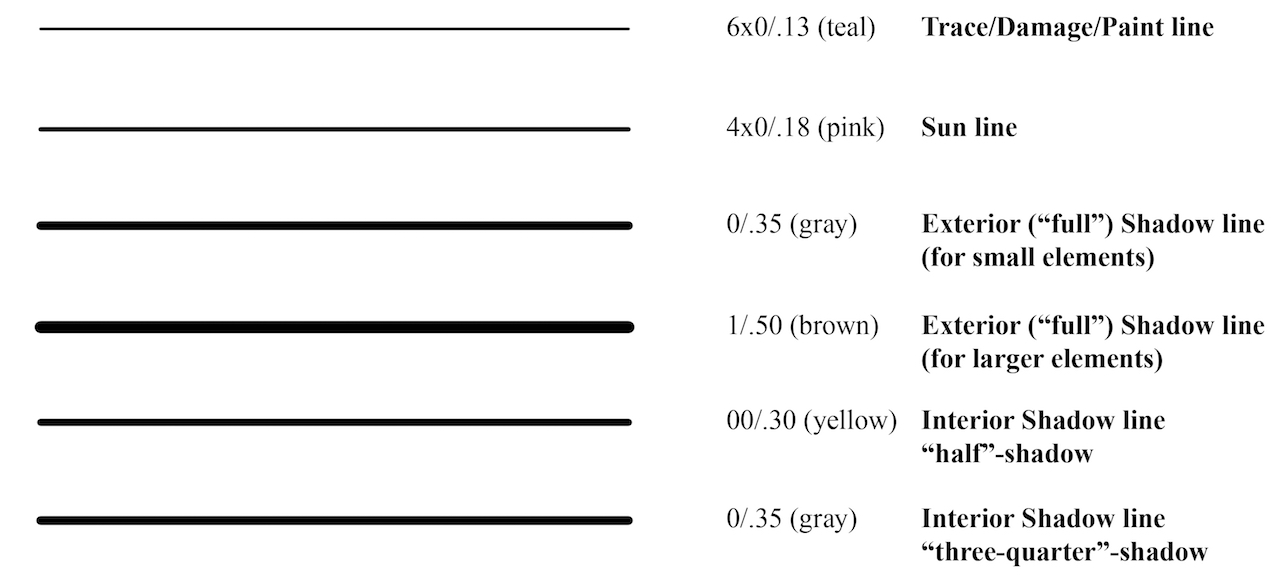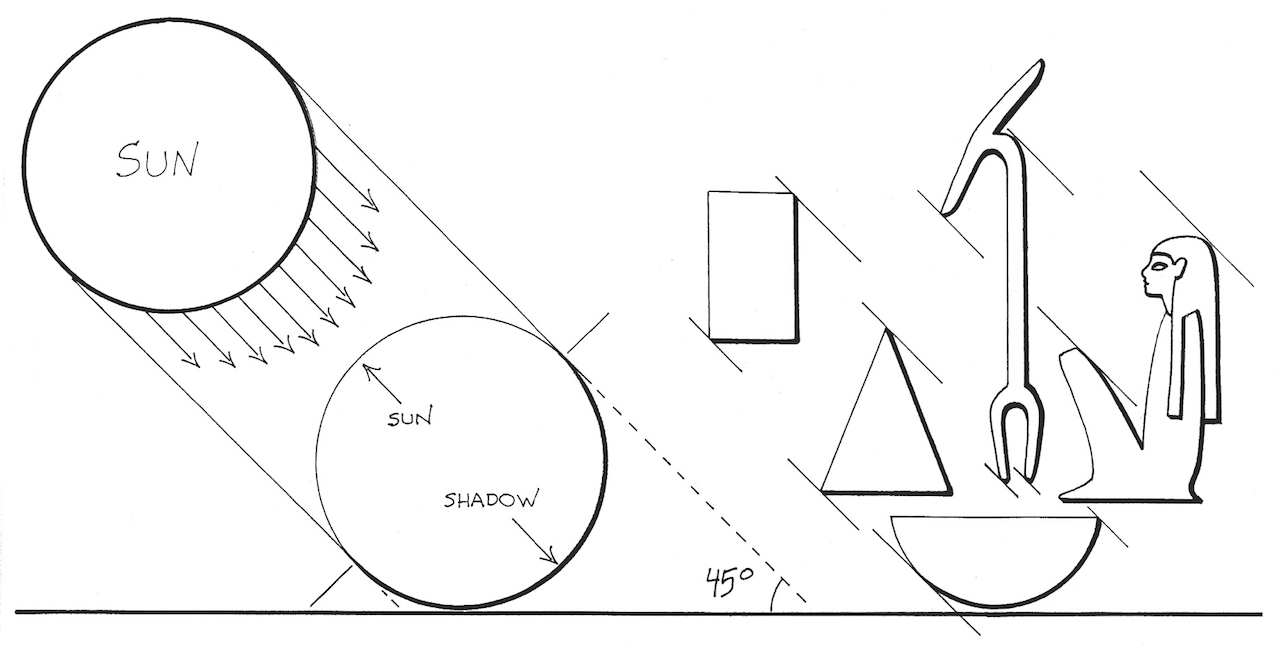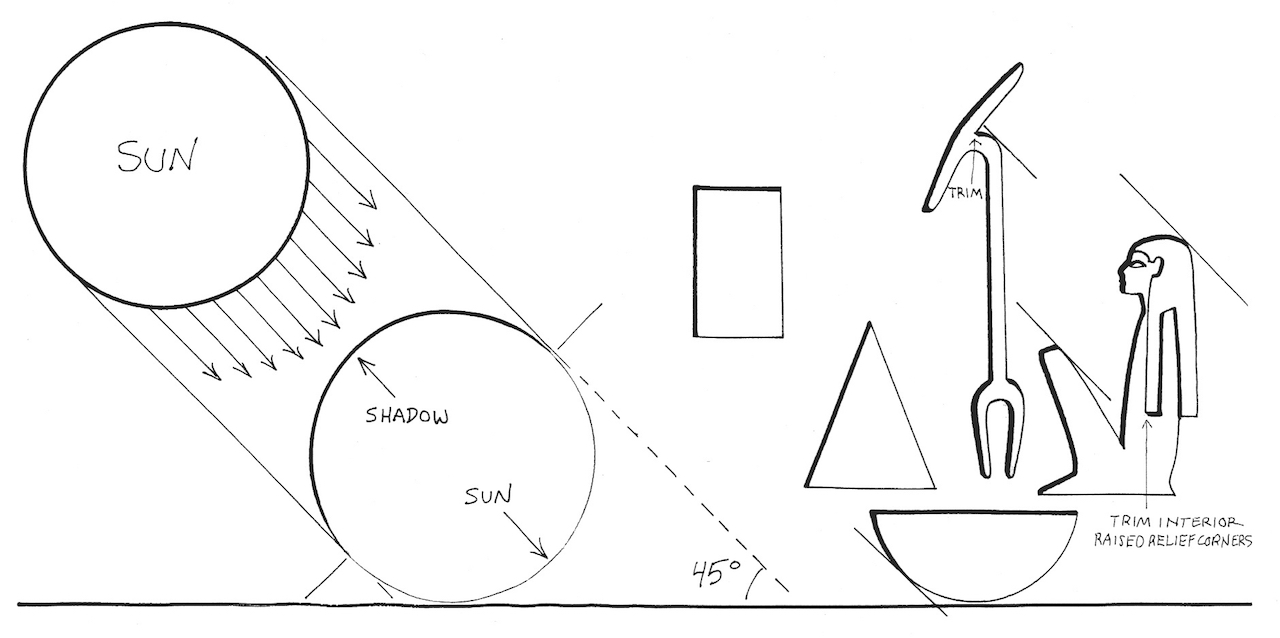Digital Epigraphy (Second Edition)
Chapter 2 – Drawing Conventions
Chapter 2, Section 1 - Basic Techniques
Written by W. R. Johnson, M. De Jong, S. Osgood, and K. Vértes

The Epigraphic Survey’s standard ink-line weights
Note: Shadow line diameters will vary depending on the scale of the drawing; the above is intended to be a general guide only and is flexible. For instance, some very small scale hieroglyphs or other details often require an even thinner shadow line than a 0/.35 (grey).
Sun line weight is always 4x0/.18, regardless of the scale of the drawing and Trace/Damage lines are always done with a 6x0/.13 pen. Paint lines are most often 6x0/.13 but in unusual cases can be 4x0/.18 when required for clarity.
The mechanical pens of choice are Koh-i-Noor Rapidograph pens. The ink that best survives the bleaching process is Koh-i-Noor 3085-F Ultradraw Ink, Non-clogging Waterproof Drawing Ink for Paper, that should be purchased fresh at the beginning of each season, at least one ¾ fl. oz. (22 ml.) for each artist for each six-month increment of work. Old, unfinished bottles should be thrown away at the beginning of each season or used for personal work.
Note: When inking on Dendril Multi-Media Vellum (used extensively for Colonnade Hall plates) use Koh-i-Noor 3071-F Acetate Ink, Waterproof Drawing Ink for Acetate and Film. Regular ink does not adhere to the vellum.

Raised Relief:
-
The hypothetical sun is always from the upper left
-
The transition between sun and shadow lines occurs at a 45-degree angle to the ground line (sun line = upper left, shadow line = lower right)
-
Outer corners of shadow lines should be nicked at a 45-degree angle
-
Interior shadow lines are generally 1/2 to 3/4 the diameter of exterior shadow lines

Sunk Relief:
-
The hypothetical sun is always from the upper left
-
Exterior shadow weights are the reverse of raised relief (shadow line = upper left, sun line = lower right); the transition between shadow and sun lines occurs at a 45-degree angle to the ground line
-
Interior details are rendered in the Raised-Relief Convention; Interior shadow lines are generally 1/2 to 3/4 the diameter of exterior shadow lines
To download the demonstration materials for this and following Sections, click on the following links:
- Translating three-dimensional relief into two-dimensional pencil/ink lines
- Translating carved lines into inked lines
- Ink line conventions for raised and sunk relief (Hieroglyphs)
- Ink line conventions for raised relief (Offerings, Offering Stands)
- Ink line conventions for raised relief (Pillars, Fans, Thrones, Snakes)
- Ink line conventions for raised relief (Birds)
- Ink line conventions for raised and sunk relief (Human Figures)
- Ink line conventions for raised and sunk relief (Sporrans, Sashes, Bull’s Tail Intersection)
- Ink line conventions for raised and sunk relief (Heads, Eyes, Ears, Feet)
- MHB raised and sunk relief samples
*All the explanatory drawings appearing in this article are drawn by W. R. Johnson and M. De Jong and the property of the Epigraphic Survey © All rights reserved.



0 comment(s)
Leave a comment(We'll keep your email address private)